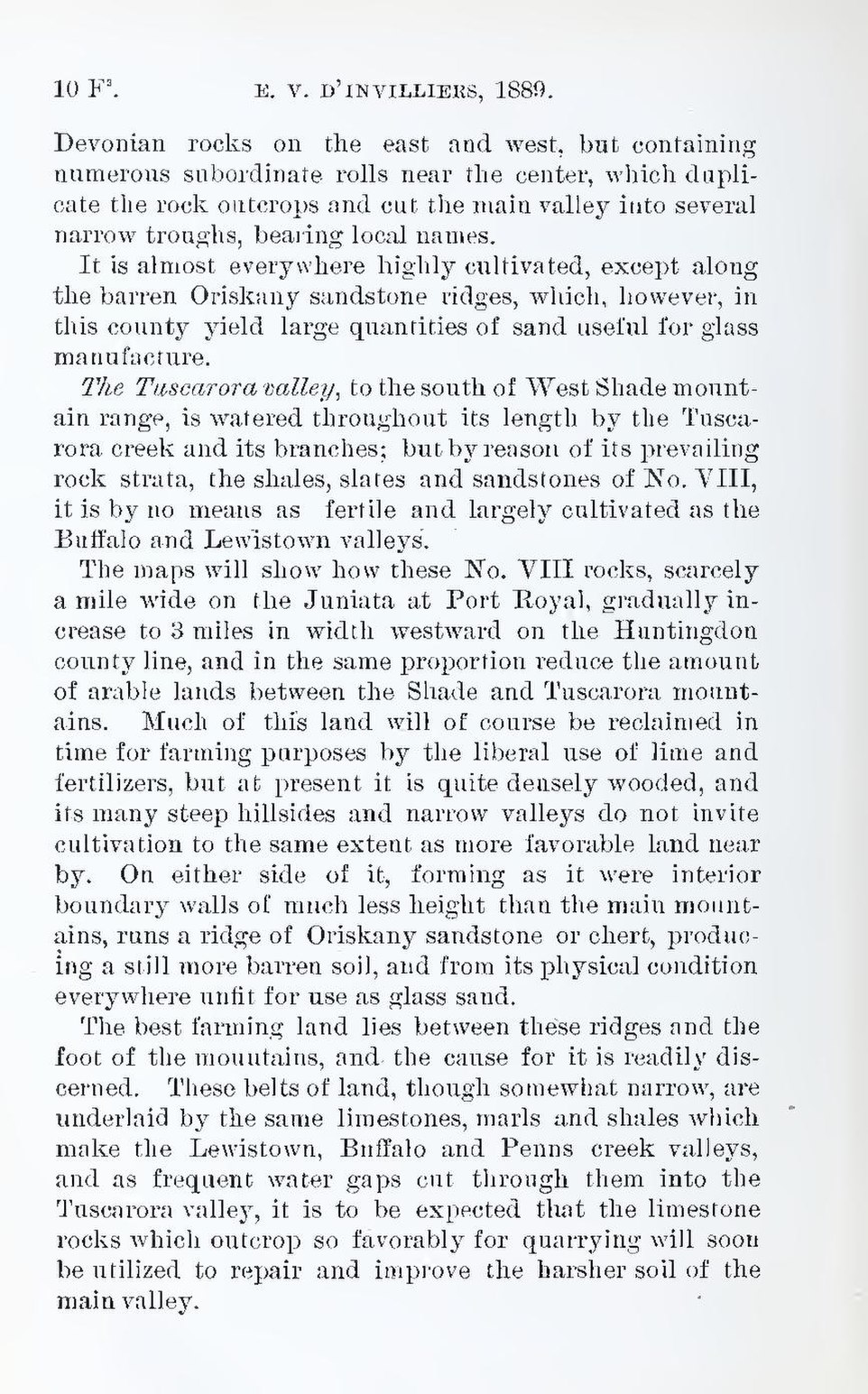Devonian rocks on the east and west, but containing numerous subordinate rolls near the center, which duplicate the rock outcrops and cut the main valley into several narrow troughs, bearing local names.
It is almost everywhere highly cultivated, except along the barren Oriskany sandstone ridges, which, however, in this county yield large quantities of sand useful for glass manufacture.
The Tuscarora valley, to the south of West Shade mountain range, is watered throughout its length by the Tuscarora creek and its branches; but by reason of its prevailing rock strata, the shales, slates and sandstones of No. VIII, it is by no means as fertile and largely cultivated as the Buffalo and Lewistown valleys.
The maps will show how these No. VIII rocks, scarcely a mile wide on the Juniata at Port Royal, gradually increase to 3 miles in width westward on the Huntingdon county line, and in the same proportion reduce the amount of arable lands between the Shade and Tuscarora mountains. Much of this land will of course be reclaimed in time for farming purposes by the liberal use of lime and fertilizers, but at present it is quite densely wooded, and its many steep hillsides and narrow valleys do not invite cultivation to the same extent as more favorable land near by. On either side of it, forming as it were interior boundary walls of much less height than the main mountains, runs a ridge of Oriskany sandstone or chert, producing a still more barren soil, and from its physical condition everywhere unfit for use as glass sand.
The best farming land lies between these ridges and the foot of the mountains, and the cause for it is readily discerned, These belts of land, though somewhat narrow, are underlaid by the same limestones, marls and shales which make the Lewistown, Buffalo and Penns creek valleys, and as frequent water gaps cut through them into the Tuscarora valley, it is to be expected that the limestone rocks which outcrop so favorably for quarrying will soon be utilized to repair and improve the harsher soil of the main valley.
